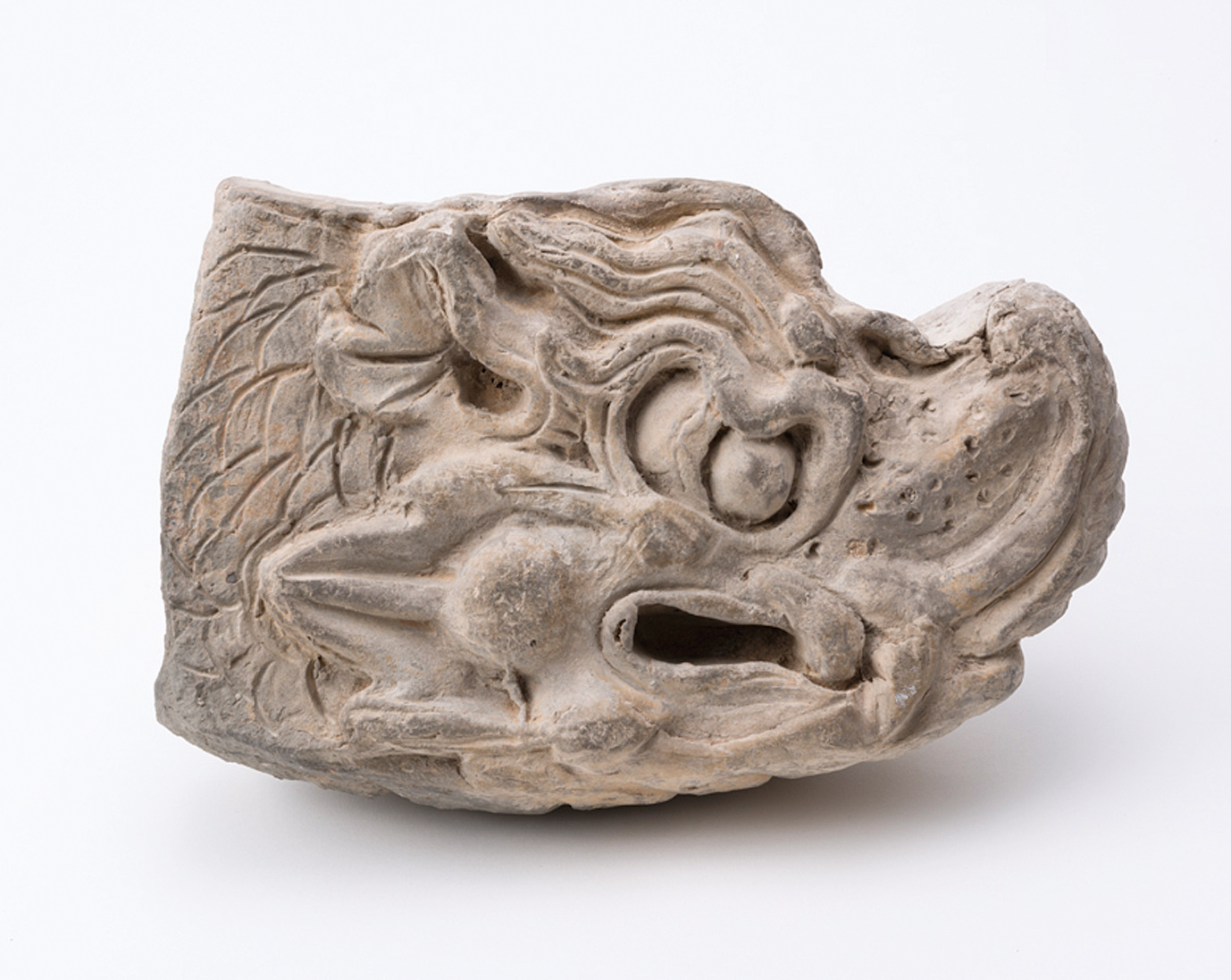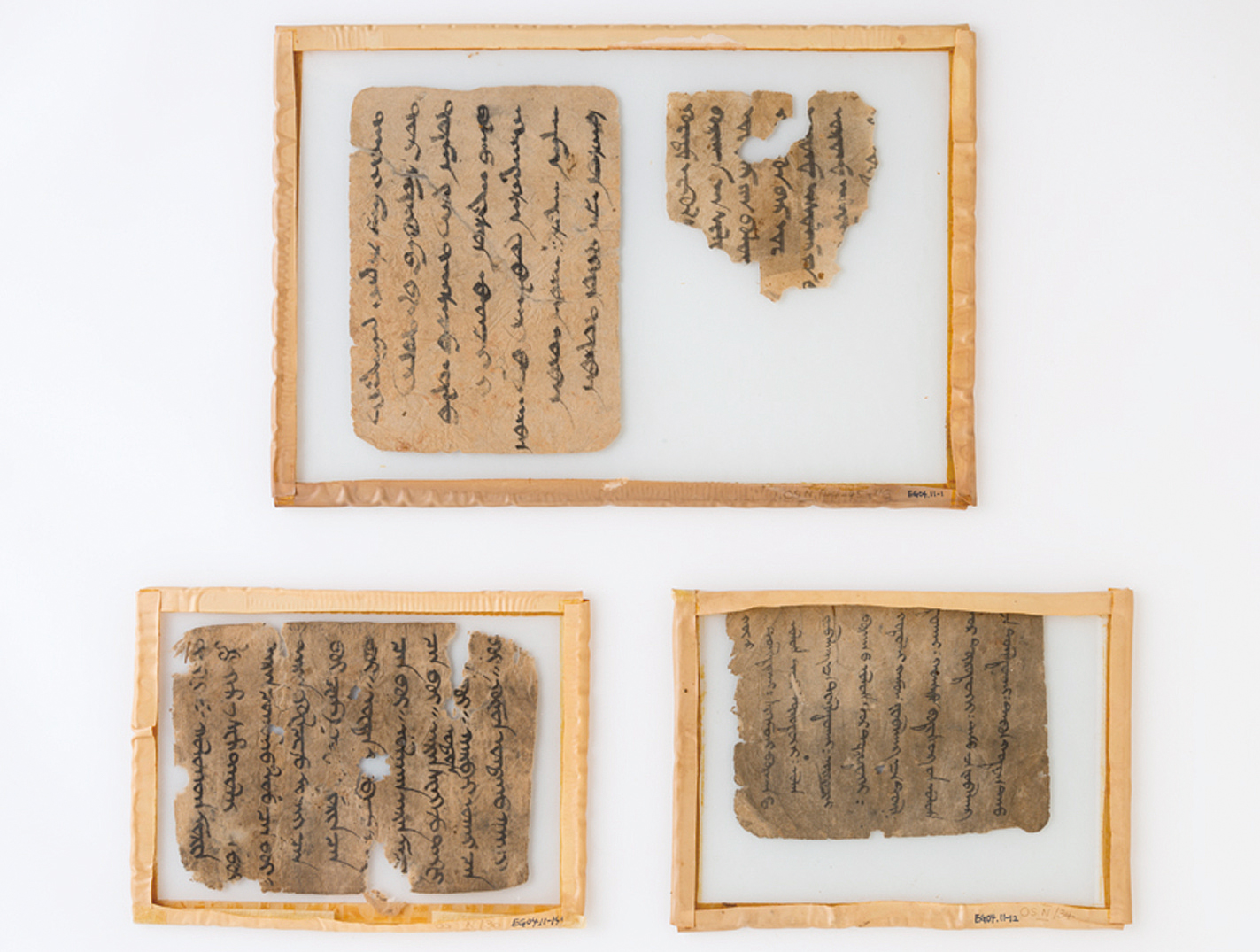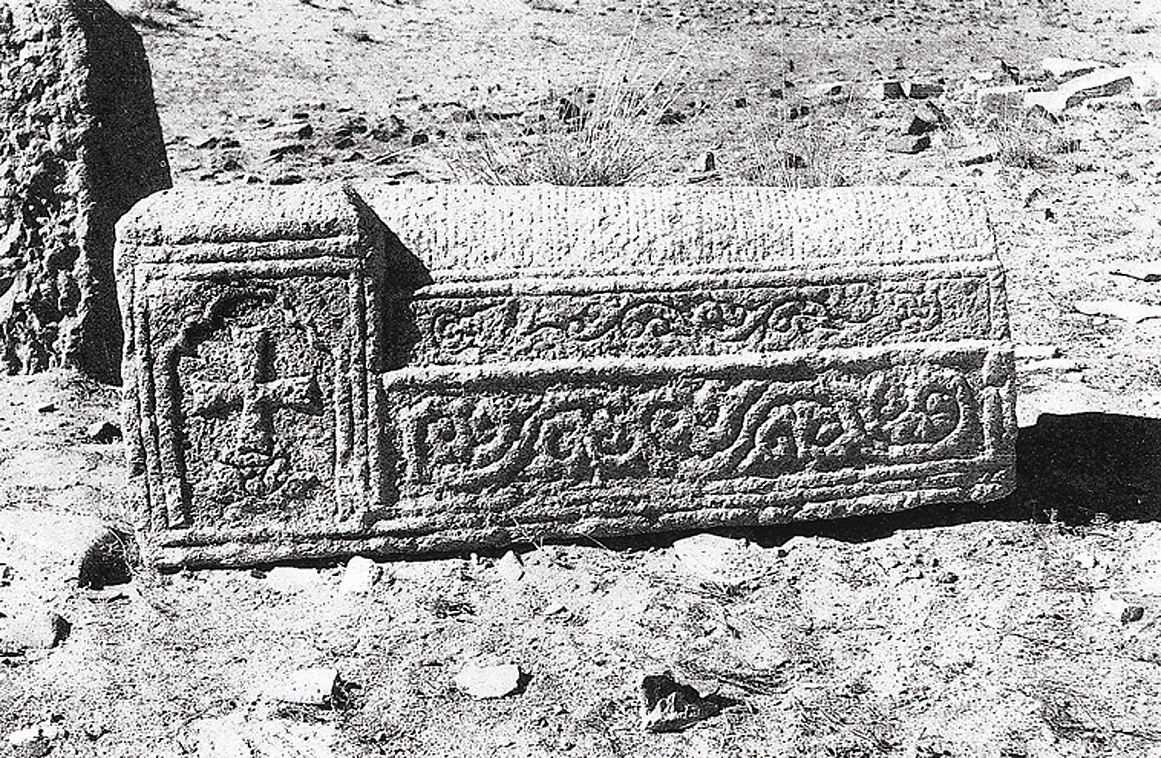F6
Olon Süme, a powerful city of the Yuan period in Inner Mongolia
Olon Süme was known as a Yuan dynasty walled city site by Huang Wenbi’s report. Meanwhile, Owen Lattimore described it as a ruined Nestorian city.
In 1935, Namio Egami visited Olon Süme and inferred that it was the royal capital of the Önggüt, a powerful tribe of the Mongol empire and the Yuan dynasty, and that its royalty were followers of the Nestorian Christian faith. In 1939 and 1941, Egami carried out a preliminary survey and planned a full-scale expedition. However, this was abandoned because of the Pacific war. Some artifacts were lost as well as almost all documents and drawings prepared from surveys during the unstable period after the war. The collection at the museum from Olon Süme survived this severe period.
The architectural ornament on display is shaped like a dragon head. Artifacts from Olon Süme, including architectural ornaments like this, are reminiscent of artifacts from Kharakorum, capital of the Mongol Empire.
In 1368, Olon Süme was destroyed during the collapse of the Yuan dynasty. In the sixteenth century during the reign of Altan Qaghan, Buddhist monasteries were built at Olon Süme. Many Mongolian documents from Olon Süme were sutra fragments. They reflect the Mongolian language of the sixteenth and seventeenth centuries and the state of Olon Süme in the period. (Tei Hatakeyama)
References
江上波夫(1967)「元代オングト部の王府址「オロン・スム」の調査」『アジア文化史研究 論考編』江上波夫:265–302、東京大学東洋文化研究所。
江上波夫(2000)『モンゴル帝国とキリスト教』サンパウロ。
江上波夫・三宅俊成(1981)『オロン・スムI 元代オングート部族の都城址と瓦塼』開明書院。
ハイシッヒ(田中克彦訳)(2000)『モンゴルの歴史と文化』岩波文庫、岩波書店。
服部四郎(1940)「オロンスム出土の蒙古語文書について」『東方学報』11(2): 257–278。
余遜・容媛(編)(1930)「民国十八、十九年国内学術界消息 6 西北科学考査団之工作及其重要発現」『燕京学報』1930(8): 1609–1614。
横浜ユーラシア文化館(編)(2003)『オロンスム-モンゴル帝国のキリスト教遺跡』横浜ユーラシア文化館。
Heissig, W. (1976) Die mongolischen Handschriften-Reste aus Olon süme Innere Mongolei (16.-17. Jhdt.). Asiatische Forschungen, Band 46, Wiesbaden: Otto Harrassowitz.
Lattimore, O. (1934) A Ruined Nestorian City in Inner Mongolia. Geographical Journal 84(6): 481–497.
Киселев, С. В., Евтюхова, Л. А., Кызласов, Л. Р., Мерперт, Н. Я. и Левашова В.П. (1965)Древнемонгольские города, Москва.



